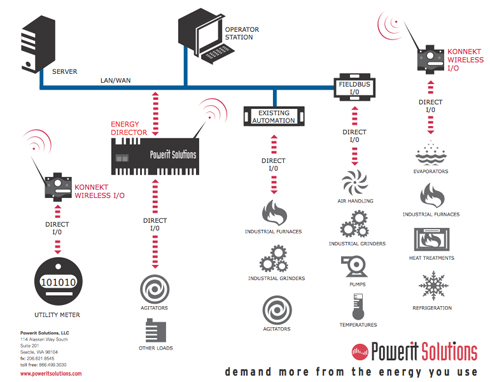Archive for January, 2008
Drilling to commence at the Geysers
Western Geothermal announced this week that drilling permits have been secured for the first two wells in its bid to revive the old PGE Unit 15 in the southwest corner of the known geothermal resource area. The company expects that they will drill 8 wells to reach production capacity for commercial operations which are expected to commence in 2010. Thermasource will be the prime contractor on drilling operations and will use the Northern California Power Association’s drill rig to perform the work.
Unlike most geothermal drilling projects, this is a pretty sure bet since there were production wells sited here in the past and the geological structure has been studied for decades. When the Western Geothermal project comes online, it will be the second project (Bottlerock being the other) to bring more production online in the Geysers region. Between Calpine and NCPA, the two active producers today, the total output of the area is around 900MW.
More Progress at Blue Mountain

Photo Credit: Nevada Geothermal
Via Yahoo News:
VANCOUVER, BRITISH COLUMBIA–(MARKET WIRE)–Jan 18, 2008 — Nevada Geothermal Power Inc. (NGP) (CDNX:NGP.V – News)(OTC BB:NGLPF.OB – News) is pleased to announce positive results from Well 25-14, completed to a depth of 2370 feet (722 metres), having intersected a strong production zone at 2270 feet (692 metres).
Rig-on flow testing on January 7, 2008, encountered temperatures of 378 degrees F (192 degrees C) and the capacity of this well is expected to be similar to Well 26A-14 and Well 23-14. Longer term testing is planned and results are expected in the next month.
“We are very pleased with the success of how the development drilling is proceeding at Blue Mountain Faulkner I Power Plant. We have drilled approximately 20 MW net capacity from just three wells,” stated Brian Fairbank, President & CEO.
This has to be considered excellent news for Nevada Geothermal, the Blue Mountain project is really beginning to shape up. The last major hurdle for development of the site is transmission, the site is 20 miles from an appropriate interconnect. Given the characteristics of the resource they’re developing, getting a line through should be possible. Of course there are many regulatory and legal aspects to complete that portion of the project. According to Nevada Geothermal, the transmission project is on target and drilling at the site will continue.
Comments are off for this post
MeV Makeover
If you’re a frequent visitor to our site, you may notice that we’ve had a minor makeover this weekend. The rationale behind this is to enrich the experience by making the content easier to read and access as well as to provide MeV some additional value by monetizing this channel. That doesn’t mean we’re shifting our business model from renewable energy project developer to web publisher – it does mean we are attempting to maximize the value of our assets for our shareholders with another means of generating revenue.
We hope that you’ll continue to visit our humble web home and we will strive to continue to provide frequent, relevant, high-quality content that you want to read. We appreciate participation, so please feel free to comment. We do moderate all comments, but to keep the spam out, not as an editorial filter to dissenting or challenging points of view.
Thank you for visiting and we hope you will enjoy your stay.
Should you wish to get information about advertising exposure on this site, here’s the information you’re looking for.
Raser raises cash
Raser Technologies announced significant funding earlier this week from Merrill Lynch for their first 10.5MW power plant in Nevada due to come online in Q3 2008. The funding vehicle is what’s known in the business as a “flip” parternship, where an independent corporate entity (often a LLC) is formed with the funding partner so certain benefits can be distributed to partners as directed by the Managing Members.
C Corporations dictate the benefits are distributed according shareholder percentage. Limited Liability Corporations aren’t bound by that convention so tax benefits for instance, can be distributed as beneficial until some set of requirements are met, then the benefits can be redistributed as agreed. The first tranche appears to be $44M in debt financing over 15 years with tax benefits flowing to Merrill.
Interestingly, using this as a benchmark, the captial cost per MW for the Raser project is $4.2M – higher than the $3M average if all the funds were used for the project. Presumably, the first one will have more expenses than subsequent modules assembled in the same way and the capital cost will be lower over time. Merrill and Raser have an agreement for up to 100MW of projects with options to finance up to 55MW more.
More Demand Management
Via Earth2Tech:
Demand management, the business of intelligently managing power use, especially during peak energy-use hours, can pay for itself in a matter of months. But now with some utilities offering incentives to commercial and industrial power users, demand management systems can give a return on investment almost immediately.
That’s the case with a $250,000 energy management system from Powerit Solutions, for which PG&E has given produce processor Guadalupe Cooling Company a grant. Powerit President Bob Zak told Earth2Tech that “using the California incentives that are demand response-based… [our] systems can be 100 percent paid for upon installation.â€
We continue to believe that demand management is a part of the solution with respect to our transition to an electric economy (from a fossil economy.) Sure, it’s essential that efficient generation from renewable resources continues forward to increase capacity, but there is also an opportunity to manage demand such that the capacity we currently have can be utilized more effectively and consumers can make decisions about their utility bills. How does this work? Powerit has provided a nice diagram that shows the key components:









